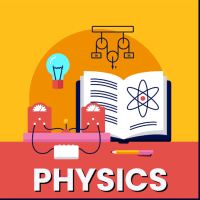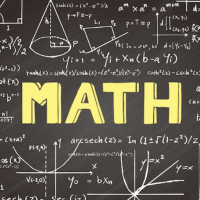JEE Exam > JEE Questions > What are the key concepts to study for wave p...
Start Learning for Free
What are the key concepts to study for wave particle nature of light in the physics section of the JEE Advanced exam?
Most Upvoted Answer
What are the key concepts to study for wave particle nature of light i...
Key Concepts to study for wave-particle nature of light in the JEE Advanced exam:
1. Dual Nature of Light:
- Light exhibits both wave-like and particle-like properties.
- It can be described in terms of both wave and particle characteristics.
- The wave nature is explained by phenomena such as interference, diffraction, and polarization.
- The particle nature is explained by phenomena such as photoelectric effect and Compton scattering.
2. Electromagnetic Waves:
- Light is an electromagnetic wave consisting of oscillating electric and magnetic fields.
- Properties of electromagnetic waves include wavelength, frequency, amplitude, and speed of propagation.
- The electromagnetic spectrum encompasses a wide range of wavelengths, from radio waves to gamma rays.
3. Wave-Particle Duality:
- The wave-particle duality principle states that particles (such as photons) can exhibit both wave and particle characteristics.
- The behavior of light can be explained using the wave-particle duality concept.
- The de Broglie wavelength relates the momentum and wavelength of a particle, including photons.
4. Photoelectric Effect:
- The photoelectric effect refers to the emission of electrons from a material when light of certain frequencies (or energies) is incident on it.
- The effect cannot be explained by classical wave theory but is well explained by the particle nature of light.
- The energy of a photon is given by E = hf, where h is Planck's constant and f is the frequency of light.
5. Compton Scattering:
- Compton scattering is the phenomenon where X-rays or gamma rays are scattered by electrons, resulting in a change in their wavelength.
- The change in wavelength can be explained by treating photons as particles and applying conservation of energy and momentum.
6. Wave-Particle Duality Experiments:
- Various experiments, such as the double-slit experiment and the Davisson-Germer experiment, provide evidence for the wave-particle duality of light.
- These experiments demonstrate the interference and diffraction patterns observed when light or electrons pass through a barrier with multiple slits.
7. Quantum Mechanics:
- Quantum mechanics is the branch of physics that describes the behavior of particles at the atomic and subatomic levels.
- Wave-particle duality is a fundamental concept in quantum mechanics.
- Understanding the basic principles of quantum mechanics, such as wave functions, probability amplitude, and superposition, is crucial for studying the wave-particle nature of light.
By thoroughly studying these key concepts, students will be well-prepared to tackle questions related to the wave-particle nature of light in the physics section of the JEE Advanced exam.
1. Dual Nature of Light:
- Light exhibits both wave-like and particle-like properties.
- It can be described in terms of both wave and particle characteristics.
- The wave nature is explained by phenomena such as interference, diffraction, and polarization.
- The particle nature is explained by phenomena such as photoelectric effect and Compton scattering.
2. Electromagnetic Waves:
- Light is an electromagnetic wave consisting of oscillating electric and magnetic fields.
- Properties of electromagnetic waves include wavelength, frequency, amplitude, and speed of propagation.
- The electromagnetic spectrum encompasses a wide range of wavelengths, from radio waves to gamma rays.
3. Wave-Particle Duality:
- The wave-particle duality principle states that particles (such as photons) can exhibit both wave and particle characteristics.
- The behavior of light can be explained using the wave-particle duality concept.
- The de Broglie wavelength relates the momentum and wavelength of a particle, including photons.
4. Photoelectric Effect:
- The photoelectric effect refers to the emission of electrons from a material when light of certain frequencies (or energies) is incident on it.
- The effect cannot be explained by classical wave theory but is well explained by the particle nature of light.
- The energy of a photon is given by E = hf, where h is Planck's constant and f is the frequency of light.
5. Compton Scattering:
- Compton scattering is the phenomenon where X-rays or gamma rays are scattered by electrons, resulting in a change in their wavelength.
- The change in wavelength can be explained by treating photons as particles and applying conservation of energy and momentum.
6. Wave-Particle Duality Experiments:
- Various experiments, such as the double-slit experiment and the Davisson-Germer experiment, provide evidence for the wave-particle duality of light.
- These experiments demonstrate the interference and diffraction patterns observed when light or electrons pass through a barrier with multiple slits.
7. Quantum Mechanics:
- Quantum mechanics is the branch of physics that describes the behavior of particles at the atomic and subatomic levels.
- Wave-particle duality is a fundamental concept in quantum mechanics.
- Understanding the basic principles of quantum mechanics, such as wave functions, probability amplitude, and superposition, is crucial for studying the wave-particle nature of light.
By thoroughly studying these key concepts, students will be well-prepared to tackle questions related to the wave-particle nature of light in the physics section of the JEE Advanced exam.

|
Explore Courses for JEE exam
|

|
Question Description
What are the key concepts to study for wave particle nature of light in the physics section of the JEE Advanced exam? for JEE 2025 is part of JEE preparation. The Question and answers have been prepared according to the JEE exam syllabus. Information about What are the key concepts to study for wave particle nature of light in the physics section of the JEE Advanced exam? covers all topics & solutions for JEE 2025 Exam. Find important definitions, questions, meanings, examples, exercises and tests below for What are the key concepts to study for wave particle nature of light in the physics section of the JEE Advanced exam?.
What are the key concepts to study for wave particle nature of light in the physics section of the JEE Advanced exam? for JEE 2025 is part of JEE preparation. The Question and answers have been prepared according to the JEE exam syllabus. Information about What are the key concepts to study for wave particle nature of light in the physics section of the JEE Advanced exam? covers all topics & solutions for JEE 2025 Exam. Find important definitions, questions, meanings, examples, exercises and tests below for What are the key concepts to study for wave particle nature of light in the physics section of the JEE Advanced exam?.
Solutions for What are the key concepts to study for wave particle nature of light in the physics section of the JEE Advanced exam? in English & in Hindi are available as part of our courses for JEE.
Download more important topics, notes, lectures and mock test series for JEE Exam by signing up for free.
Here you can find the meaning of What are the key concepts to study for wave particle nature of light in the physics section of the JEE Advanced exam? defined & explained in the simplest way possible. Besides giving the explanation of
What are the key concepts to study for wave particle nature of light in the physics section of the JEE Advanced exam?, a detailed solution for What are the key concepts to study for wave particle nature of light in the physics section of the JEE Advanced exam? has been provided alongside types of What are the key concepts to study for wave particle nature of light in the physics section of the JEE Advanced exam? theory, EduRev gives you an
ample number of questions to practice What are the key concepts to study for wave particle nature of light in the physics section of the JEE Advanced exam? tests, examples and also practice JEE tests.

|
Explore Courses for JEE exam
|

|
Signup for Free!
Signup to see your scores go up within 7 days! Learn & Practice with 1000+ FREE Notes, Videos & Tests.























